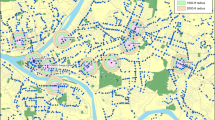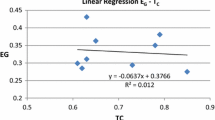Abstract
The disadvantages of conventional transportation study models, in particular their large data requirements and their weaknesses in dealing with changes in trip generation rates have led to a need for a simple model that can quickly and at low cost examine alternative public transport strategies.
This paper investigates simple economic models of bus demand, examines alternative variables that can be used and discusses some alternative model forms. It demonstrates the results of a model using data from twelve urban bus operators in Britain and compares the results with those from other types of study. The model utilises fare and service quality elasticities to explain the decline in passengers on urban bus services, and derives an average elasticity with respect to fare changes of −0.31 and with respect to service quality changes of +0.62. It is estimated that fare rises accounted for 13% of the 43% decline in passengers over the last fifteen years, vehicle mileage reductions for 14.3% and that only 15.7% was due to such factors as rising car ownership which are often given as the cause of declining bus patronage.
The results, by showing that passengers are far more sensitive to changes in service than they are to fare rises, are a useful guide to the broader public transport policy issues, and the paper concludes that the model does provide a useful method of forecasting public transport demand at a strategic level. Further work is needed, however, to establish more accurate forecasts for different types of passenger and studies are now being undertaken to establish these and to construct an operational forecasting model that can be applied with only limited data requirements
Similar content being viewed by others
References
Buckles, P. (1974). Stevenage Public Transport, the Stevenage Superbus Experiment. Stevenage: The Stevenage Development Corporation.
Daly, A. J. and Gale, H. S. (1974). Elasticity of demand for public transport. Reading: Local Government Operational Unit. Report T52.
Department of the Environment (1971). An Analysis of the Urban Bus Problem (Unpublished paper)
Department of the Environment (1974). Bus Demonstration Project; Summary Report No. 6: Formby. London: Department of the Environment.
Fairhurst, M. H. (1972). The Receipts Impact of One Man Operation, some explanations and predictions. OR Report R186. London: London Transport.
Fairhurst, M. H. (1973). An Analysis of Factors Affecting Bus and Rail Receipts. OR Report R201 London: London Transport.
Grey, A. and Lewis, D. (1974). “Public Transport Fares and the Public Interest.” Paper presented at the Urban Studies Conference, Oxford, September.
Hill, G. (1973). “A Procedure for Determing “Economic Base” Public Transport Services and Fare Levels for Transport Study Design Years,” Proceedings of Annual Conference, PTRC. London.
Hooper, P. O. and Mullen, P. (1974). “The Effect of Increased Fuel Prices on Car Travel,” Traffic Engineering & Control 15, 728–731.
Kemp, M. A. (1973). “Some Evidence of Transit Demand Elasticities”, Transportation 2, 25–52.
Richards, M. G. (1974). “Disaggregate Simultaneous Urban Travel Demand Models: A brief introduction,” Transportation 3, 335–342.
Richards, M. G. and Ben Akiva, M. (1974). “A Simultaneous Destination and Modal Choice Model for Shopping Trips,” Transportation 3, 343–355.
Tanner, J. C., Gyenes, L., Lynam, D. A., Magee, S. V. and Tulpule, A. H. (1973). Development and Calibration of the CRISTAL Transport Planning Model. TRRL Report LR 574. Crowthorne: Department of the Environment, Transport and Road Research Laboratory.
Tyson, W. J. (1974). “An Analysis of Trends in Bus Passenger Miles,” Journal of Transport Economics and Policy. 8; 40–47.
Wabe, J. S. and Coles, O. B. (1975). “The Peak and Off-Peak Demand for Bus Transport — a cross-sectional analysis of British municipal operators,” Applied Economics (in the press).
Author information
Authors and Affiliations
Rights and permissions
About this article
Cite this article
Mullen, P. Estimating the demand for urban bus travel. Transportation 4, 231–252 (1975). https://doi.org/10.1007/BF00153577
Issue Date:
DOI: https://doi.org/10.1007/BF00153577




